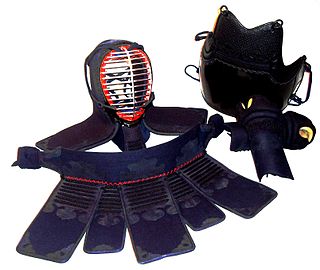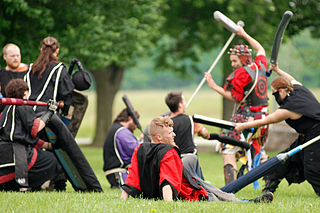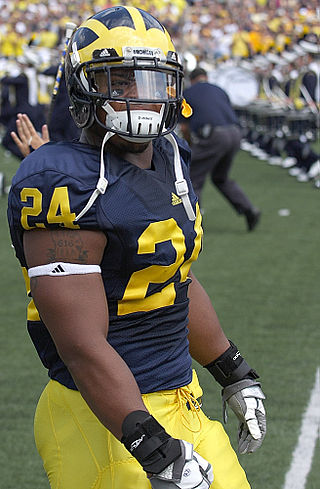
To improve motorcycle safety, many countries mandate the wearing of personal protective equipment such as protective clothing and helmets. Protective clothing may include certain types of jackets, gloves, boots, and pants. Jackets meant for motorcyclists are typically made of leather or specialized man-made fabrics like cordura or Kevlar. These jackets typically include padding on the elbow, spine, and shoulder regions. This was once quite bulky, but modern technology and materials have made it unobtrusive. Gloves are generally made of leather or Kevlar and some include carbon fiber knuckle protection. Boots, especially those for sport riding, include reinforcement and plastic caps on the ankle and toe areas. Pants are usually leather, cordura, or Kevlar. Except for helmets, none of these items are required by law in any state in the USA, or in any part of the UK but are recommended by many of those who ride.

A motorcycle helmet is a type of helmet used by motorcycle riders. Motorcycle helmets contribute to motorcycle safety by protecting the rider's head in the event of an impact. They reduce the risk of head injury by 69% and the risk of death by 42%. Their use is required by law in many countries.

Bōgu, properly called kendōgu, is training armour used primarily in the Japanese martial art of kendo, with variants used for jūkendō, tankendo, and naginata.

A foam weapon, also known as a boffer, padded weapon, or latex weapon, is a padded mock weapon used for simulated handheld combat. Such weapons are used in simulated battles called battle gaming and in some live action role-playing games (LARPs).

Sports equipment, sporting equipment, also called sporting goods, are the tools, materials, apparel, and gear used to compete in a sport and varies depending on the sport. The equipment ranges from balls, nets, and protective gear like helmets. Sporting equipment can be used as protective gear or a tool used to help the athletes play the sport. Over time, sporting equipment has evolved because sports have started to require more protective gear to prevent injuries. Sporting equipment may be found in any department store or specific sporting equipment shops.
A football helmet is a type of protective headgear used mainly in gridiron football, although a structural variation has occasional use in Australian rules football. It consists of a hard plastic shell with thick padding on the inside, a face mask made of one or more plastic-coated metal bars, and a chinstrap. Each position has a different type of face mask to balance protection and visibility, and some players add polycarbonate visors to their helmets, which are used to protect their eyes from glare and impacts. Helmets are a requirement at all levels of organized football, except for non-tackle variations such as flag football. Although they are protective, players can and do still suffer head injuries such as concussions.

In ice hockey, the goaltender wears specialized goaltending equipment to protect themselves from the impact of the puck, and to assist in making saves. Ringette and rinkball goaltenders use the same equipment with some exceptions. This article deals chiefly with the sport of ice hockey.

Knee pads or kneepads are protective gear worn on knees to protect them against impact injury from falling to the ground or hitting an obstacle, or to provide padding for extended kneeling.Their primary purpose is to shield this vulnerable joint from potential impact injuries that may occur due to accidental falls, collisions with objects, or striking obstacles. By providing a cushioning barrier between the knees and the ground or other hard surfaces, knee pads help minimize the risk of severe damage or trauma.

The IIFS was introduced in 1988, to serve as a fighting and existence carrying system—a possible replacement for the All-purpose Lightweight Individual Carrying Equipment employed and fielded by United States Armed Forces since 1973.

Sportswear or activewear is athletic clothing, including footwear, worn for sports activity or physical exercise. Sport-specific clothing is worn for most sports and physical exercise, for practical, comfort or safety reasons.

A shin guard or shin pad, is a piece of equipment worn on the front of an athlete's shin to protect it from injury. These are commonly used in sports including association football, baseball, ice hockey, field hockey, lacrosse, cricket and mountain bike trials. They are also used in combat sports and martial arts competitions including kickboxing, mixed martial arts, taekwondo, karate and professional wrestling. This is due to either being required by the rules/laws of the sport or worn voluntarily by the participants for protective measures.

In ice hockey, players use specialized equipment both to facilitate the play of the game and for protection as this is a sport where injuries are common, therefore, all players are encouraged to protect their bodies from bruises and severe fractures.
Professionals and amateurs alike wear protective headgear (helmets) to reduce the chance of injury while playing American and Canadian football. The football helmet has changed over time and many different materials have become available. The rules of the game have changed as well.

Cooper Canada Ltd. was a sporting goods and fine leather goods manufacturer based in Toronto, Ontario, Canada. In its heyday, the 1960s through to the 1980s, the company was Canada's leading producer of fine leathergoods, hockey, baseball and lacrosse equipment. The company pioneered team-coloured hockey equipment and the use of nylon, foam, and modern plastics in equipment manufacturing.

Protective equipment in gridiron football consists of equipment worn by football players for the protection of the body during the course of a football game. Basic equipment worn by most football players include helmet, shoulder pads, gloves, shoes, and thigh and knee pads, a mouthguard, and a jockstrap or compression shorts with or without a protective cup. Neck rolls, elbow pads, hip pads, tailbone pads, rib pads, and other equipment may be worn in addition to the aforementioned basics. Football protective equipment is made of synthetic materials: foam rubbers, elastics, and durable, shock-resistant, molded plastic. Football protective equipment has remained consistent in use for decades with some slight modifications made over the years in design and materials. The assignment and maintenance of football gear belongs to the team equipment manager.

The use of personal protective equipment (PPE) is inherent in the theory of universal precaution, which requires specialized clothing or equipment for the protection of individuals from hazard. The term is defined by the Occupational Safety and Health Administration (OSHA), which is responsible for PPE regulation, as the "equipment that protects employees from serious injury or illness resulting from contact with chemical, radiological, physical, electrical, mechanical, or other hazards." While there are common forms of PPEs such as gloves, eye shields, and respirators, the standard set in the OSHA definition indicates a wide coverage. This means that PPE involves a sizable range of equipment. There are several ways to classify them such as how gears could be physiological or environmental. The following list, however, sorts personal protective equipment according to function and body area.

EvoShield is an American brand that specializes in protective gear. Some of EvoShield products are wrist guards, elbow guards, as well as rib and heart protectors for the sports of baseball, gridiron football, lacrosse and softball.

A racing helmet is a form of protective headgear worn by racing car and rally drivers. Motor racing has long been known to be an exceptionally risky sport: sudden deceleration forces on the head can easily occur if a racing car loses control at the very high speeds of competitive motor racing or the rough terrain experienced in rallying. A risk more nearly unique to motor racing is the possibility of drastically severe burns from fuel igniting when the fuel lines or fuel tank of the vehicle are jolted sufficiently to dislodge or breach them in a situation in which the driver cannot soon enough escape from his car. This happened to world champion driver Niki Lauda at the 1976 German Grand Prix race at the Nürburgring in a crash from which he barely escaped alive.

Personal protective equipment serves an integral role in maintaining the safety of an athlete participating in a sport. The usage and development of protective gear in sports has evolved through time, and continues to advance over time. Many sports league or professional sports mandate the provision and usage of protective gear for athletes in the sport. Usage of protective gear is also mandated in college athletics and occasionally in amateur sports.

In sports medicine, helmet removal is the practice of removing the helmet of someone who has just experienced a sports injury in order to better facilitate first aid. Obvious causes include head and neck injury, or both, with no immediate means of excluding neck injury in the athlete who may be unable to give a history.



















